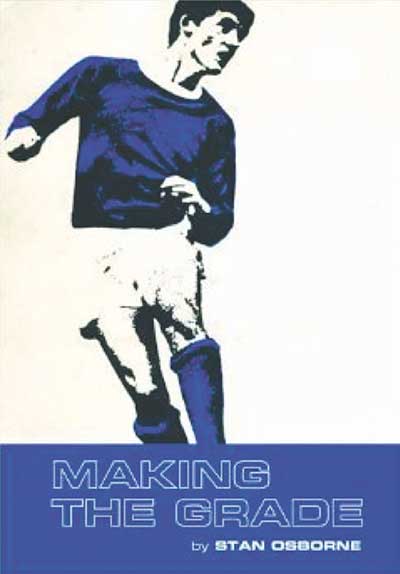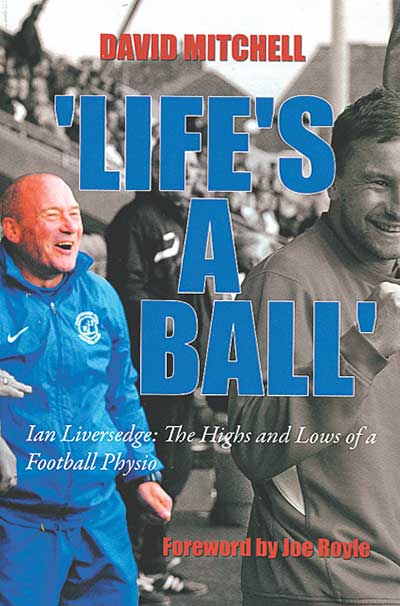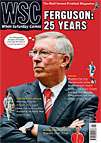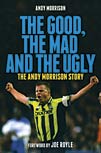Search: 'Joe Royle'
Stories
 by Stan Osborne
by Stan Osborne
Legends Publishing, £12.99
Reviewed by Julian McDougall
From WSC 343 September 2015
Making the Grade was published in 2012 but without the critical reception it deserved. Stan Osborne has had two careers, footballer and teacher. Here, he shares his memories of the first, spanning just two years (1969-71) as an Everton youth player and alludes to its impact on the much longer second. This is most striking when he accounts for his own time at school: “This was the 1960s and there was no hue and cry about physical punishment… we accepted [it] without complaint, in the knowledge that it was invariably administered justly and fairly.” The author never says this directly, but there is a strong implication that he laments not only today’s player power but also the shifts in school discipline.
On the cover, Joe Royle says he read the book in one night, and certainly any reader with an interest in the vein of unsung football insight previously attributed to the likes of Eamon Dunphy, Gary Nelson and Gary Imlach (whose father Stewart, then an Everton coach, plays a prominent role here) won’t labour over this.
Osborne writes directly and with precision, dispensing with the need for reflective flourish – the order of things was as it was, and the better for it. The book reflects on the social and hierarchical function of “banter” at a football club and the pervading insecurity of that world – much of the bullying is carried out by those with the most to lose, the younger pros keeping apprentices in their place, while the first-team stars are benign and aloof.
Has Osborne observed a parallel in education, you wonder? But the central theme – of this being a harsh world for working-class men, from school to football to the outside world – ultimately turns the author into a victim as he is released and bluntly asked by Everton manager Harry Catterick to “close the door on the way out”. His playing days will continue at semi-pro level, but within weeks he is at college training for PE teaching. Never, though, does Osborne lay blame, he accepts this cruel fate as harsh but fair, as with the pain inflicted by his teachers.
This sense of undeveloped implication ultimately frustrates as the book might have been even more fascinating had Osborne described life as a PE teacher in the Black Country. Every day must, we’d assume, be inflected with the experiences of his first career. Teaching is full of exes: artists, musicians, athletes and these days, thanks to Michael Gove’s scheme, soldiers, all carrying the weight of the past. When Osborne tells us “I walked out a hard bitten angry young man with a chip on his shoulder the size of the Liver Buildings who was determined never to feel the pain of failure again”, I want to know how this impacted on his teaching, and how he feels about his students’ attitudes.
In the final pages he returns to Everton’s training ground, Finch Farm having replaced Bellefield, now a “relic from a different time and place”, and casts another stoical gaze on the inevitability of heartbreak for most of today’s academy hopefuls, still envious of their slim chance despite his own experience – “gosh, the tears hurt… even now”. Leaving the reader wanting more is, of course, the hallmark of a great book, and this reader hopes Osborne writes a sequel about his second career.
 Ian Liversedge: the highs and lows of a football physio
Ian Liversedge: the highs and lows of a football physio
by David Mitchell
AuthorHouse UK, £10.95
Reviewed by Brian Simpson
From WSC 337 March 2015
Ian Liversedge had a long career as an itinerant football physio working for 20 clubs and 15 managers. The highlights are at the margins of his central story as he encounters famous people who played minor roles in his life. As a young player who didn’t make the grade as a pro he experienced the detachment of Everton’s legendary manager Harry Catterick and later encountered Brian Clough, in decline but still gracious in victory. A quote from Kevin Keegan in his playing days at Newcastle goes someway to explaining why striker Imre Varadi was on his way to accumulating 16 clubs: “OK, Varadi has scored 21 goals this season. I’ve set him up to score 60. How many times has he set me up? None. Fact.”
Less well known but vividly drawn is Accrington’s ex-chairman Eric Whalley. He had played for the club, managed them twice, taken a place on the board and eventually bought them. He funded player purchases but fell out with the local council about the cost of yoga classes for the club’s players. A major focus is the ten years Liversedge spent at Oldham from the mid-1980s, where the chalk-and-cheese chemistry of the taciturn Willie Donachie and the garrulous Joe Royle is captured well. His time at Newcastle also gives an insight into the management pairing of Keegan and Arthur Cox, yet very little of this is entirely new.
A desire to pack in as many stories as possible means that some topics don’t get followed up as fully as they might. For example, there are several incidental comments on the changes that have taken place in the treatment and medical care of players, but these are not considered in any coherent way. Some key points are better illustrated by a simple anecdote, such as when the gap between rehabilitation options at elite clubs and the rest is highlighted by noting that at smaller clubs his best option was sometimes to just take players for a walk and a coffee.
Towards the end of the book he describes meeting old friends from football when the conversation rarely touches on the game but is more about “the scrapes” they shared. But drinking exploits are the sort of tales that can only have been funny to those taking part and possibly not even then. Fans who followed Oldham in the period he describes might feel slightly short changed to find that many at the club followed a motto Liversedge characterises as “win or loose, have a booze”.
His description of players’ behaviour, and his own, is at least frank as he acknowledges its impact on his family life. But there is little reflection on whether the behaviour should have a place within any professional sport, nor an understanding of the way it feeds the negative stereotype of football held by many people. In the end, and despite the strengths of the book, his largely uncritical acceptance of some of what he saw or did leaves an impression in places of an opportunity missed.
 Goodison Park was once a place ahead of its time but, as Simon Hart reports, the rebranded “Old Lady” is now a meeting place for disgruntled supporters frustrated by their club’s decline
Goodison Park was once a place ahead of its time but, as Simon Hart reports, the rebranded “Old Lady” is now a meeting place for disgruntled supporters frustrated by their club’s decline
Step into the parish hall of St Luke the Evangelist church on the corner of Goodison Road and Gwladys Street, and you enter a world that could not be any further removed from the ad-man’s fantasy of the face-painted, replica-shirted modern “footy” fan and their agony-and-ecstasy matchday experience.
 The Andy Morrison Story
The Andy Morrison Story
by Andy Morrison
Fort Publishing, £16.99
Reviewed by Tim Manns
From WSC 298 December 2011
Ask about Andy Morrison in some of Plymouth's rougher pubs and the general response is a wince or a sharp intake of breath. He left the city 18 years ago, but is still remembered with a mixture of fear and dislike by many. Ask the same question at Home Park and more often than not those old enough to have seen him play will smile and wish there was a player with similar commitment and attitude in the current team. And there, as the man himself recognises, lies the conundrum. How could he run towards Argyle's hooligan element to celebrate a goal in the afternoon and then seek them out later for a brutal fight in the company of his brothers and mates?